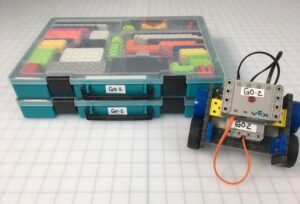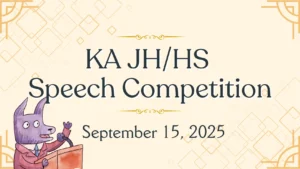Introduction: A Changing Admissions Landscape
Picture this: a high school senior, stressed out and staring at a blinking cursor on a blank screen. They open up ChatGPT and type, “Can you help me think of ideas for my college essay?” These kinds of scenes are happening more and more. Generative AI is no longer a futuristic tool for techies; it’s something everyday students are using to try to make sense of the college admissions maze. But here’s the question at the heart of all this: Are colleges okay with that?
As of mid-2025, we’ve started to see real answers. A number of schools have put their AI policies in writing. Some are open to limited use, others draw hard lines. What they agree on, though, is this: your application should sound like you. That idea of authenticity is showing up everywhere, even as public conversation continues to ask deeper questions about fairness, access, and whether the “old rules of admission” still apply in the age of AI.
The Common Application Sets a Strict Baseline
If you’re applying to college in the U.S., many colleges use the format Common Application (over a thousand schools accept it). That means their rules set the tone for what is and isn’t okay when it comes to AI. Their stance? Pretty firm. The Common App’s official fraud policy says your application must be “truthful, complete, and the original work of the applicant.” That includes essays and short answers. If any part of your writing is generated or rewritten (even partially) by AI or a hired consultant, that’s considered fraud.
Even schools that haven’t spelled out their own AI rules often point back to this standard. So, unless a college tells you otherwise, it’s safest to assume this is the baseline. TL;DR: If you’re thinking about letting ChatGPT write your essay, don’t.
Permitted Uses of AI: What Colleges Allow
While AI-generated essays are off the table, many schools are okay with more lightweight uses of AI—things that feel closer to proofreading or organizing your thoughts. For example, it’s generally fine to use AI to help you brainstorm what to write about, or to get some suggestions on how to say something more clearly. Many schools also allow basic grammar and spelling help (like what you’d get from Grammarly) and are fine with you using AI to do some research on colleges or how the application process works.
In short, these tools are seen more like a digital highlighter than a ghostwriter. If it’s helping you get to your idea, rather than writing the idea for you, you’re probably on the right track.
Common Restrictions: Drawing the Line
That said, there are some hard limits. Most schools are pretty consistent on where they draw the line. You can’t let AI write your essay for you, even if you go back and tweak it afterward. You also can’t use it to translate your entire essay from another language, or to rewrite things so heavily that your natural voice disappears. And pasting in a prompt and submitting the AI’s first draft without doing the real work of revision? That’s definitely not okay.
Several schools go out of their way to say: Do not copy and paste from a chatbot. Even if it sounds good, even if it feels like something you could have written. Colleges want your voice, your story, your words. If you hand that over to a machine (even just a little), they may notice. And if they do, there could be real consequences.
Institutional Highlights and Unique Approaches
| Institution | Permitted Uses | Restrictions | Policy Link |
| Cornell University | Research, brainstorming, grammar/spell-checking | Grammar checks, brainstorming, and research | Link |
| Univ. of Michigan – Rackham | Translating words and phrases | No outlining or drafting; full authorship must be affirmed | Link |
| Wharton Global Youth Program | Brainstorming, phrasing help, organizing ideas | No substantial AI-written content; detection tools may be used (to see if you really wrote your essay) | Link |
| Caltech | Grammar checks, brainstorming, research | No outlining, drafting, or voice replacement; must disclose AI use | Link |
| Brown University | Grammar and spelling assistance | No AI-generated content for essays or short answers | Link |
Transparency and AI Detection Tools
A few schools have started to show their cards when it comes to detecting AI. Some say outright that they use detection tools to check for machine-generated writing. Others are starting to ask students to disclose whether they used AI at all. Right now, this kind of transparency is still the exception, not the rule—but that might not last.
What we’re seeing is a balancing act: schools want to leave room for curiosity and exploration, especially with how fast these tools are evolving. But they also want to make sure no one gets an unfair edge, or worse, fakes their way through the process. So if you’re thinking of using AI, it’s worth knowing that your application might be looked at through that lens.
Implications for Applicants
If you’re applying to more than one school (and most students are), you’ll quickly realize the rules around AI aren’t consistent. What’s totally fine at one school might be a dealbreaker at another. That means applicants are stuck trying to navigate a moving target, often with little guidance.
In the absence of clear direction, your safest bet is to aim for the strictest interpretation: write everything yourself, and use AI only the way you’d use a spellchecker or a brainstorming buddy. If you wouldn’t copy-paste something a friend wrote, don’t do it with ChatGPT either.
Even if a school allows some AI use, the expectation is still that your voice comes through loud and clear. That’s the part admissions officers are looking for, and it’s the part that can’t be faked. So yes, AI might help you get unstuck or polish a sentence, but the story, the tone, the perspective? That’s all you.
Broader Ethical Debates
The rise of AI in applications has triggered a real conversation. Some see it as a tool for leveling the playing field. This is especially relevant for students without traditional resources or native fluency in English. Others worry it just opens new loopholes to game the system.
Some institutions are even testing prompts that acknowledge AI, trying to strike a balance between innovation and authenticity. But a much more contentious view comes from Cluely, an AI startup whose slogan is literally “cheat on everything.” Co-founded by Roy Lee, who was previously suspended from Columbia for creating AI tools to rig job interviews, the company openly promotes an unapologetic embrace of machine-assisted performance. Its founders argue that if everyone does it, cheating stops being cheating. It’s a mindset they liken to the normalization of calculators or spellcheck.
Whether that outlook feels like bold disruption or reckless disregard for integrity is up to the reader—but its existence shows just how fractured opinion has become.
Conclusion: Navigating the Road Ahead
Generative AI isn’t going anywhere, but the rules around how to use it in college applications are still taking shape. For now, students have to work through a maze of different policies, assumptions, and evolving expectations. It’s confusing, and honestly, a bit unfair at times.
But if there’s one principle that shows up again and again, it’s this: admissions officers want to hear from you. Not a chatbot. Not a consultant. You. Your ideas, your perspective, your way of putting things. That doesn’t mean you can’t use tools to help you get there. It just means the final product has to sound like a real person—and that person has to be you.
Not sure what your voice sounds like? There’s a way you can start to find out. All you need is paper and a pencil (or pen; pen is probably better). Sit down, pick up the pencil, and write words. It doesn’t matter what they are. Just write something. And don’t stop. Don’t stop until the page is full. Did you know you had those words in you? I sure didn’t when I tried this myself. But those are part of your voice.
Maybe don’t send those words to the admissions office just like that. You’ll want to put a lot more thought and planning into it and ask people you trust to read it and give you some feedback. But in a kind of backwards way, those words are exactly what these rules asking that you “sound like you” are about. No matter what your final essay looks like, don’t forget to let the “you” in the words you choose shine through.






